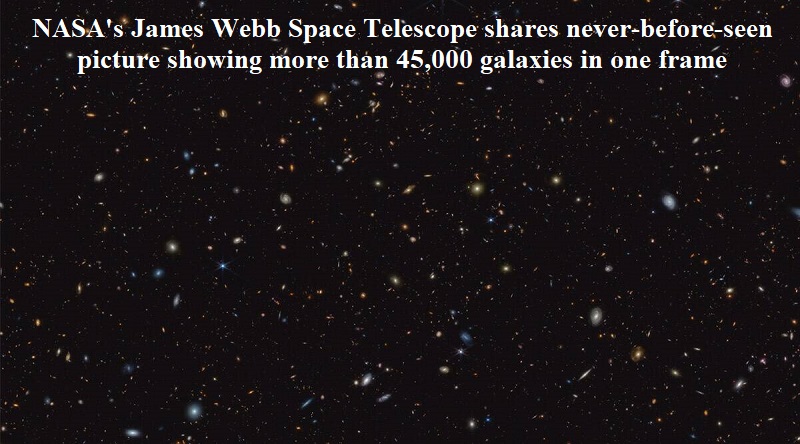
NASA’s James Webb Space Telescope has released a captivating and unprecedented image that showcases over 45,000 galaxies captured in a single frame. The photograph was taken of a portion of the sky known as GOODS-South as part of the JWST Advanced Deep Extragalactic Survey (JADES) program.
According to NASA, around 32 days of telescope time will be dedicated to the JADES program, aiming to unveil and characterize distant and faint galaxies. Astronomers are particularly interested in understanding the formation of the first stars and galaxies. Even though the data is still being analyzed, the team has already discovered hundreds of galaxies that existed when the universe was less than 600 million years old. These galaxies are vibrant with young, hot stars.
Marcia Rieke, co-lead of the JADES program and a professor at the University of Arizona in Tucson, expressed the team’s desire to address several questions. These include how the earliest galaxies assembled, the rate at which they formed stars, and why some galaxies cease star formation.
The region of the sky captured in the image was previously observed by the Hubble Space Telescope.
Ryan Endsley from the University of Texas led the investigation into galaxies that existed between 500 and 850 million years after the Big Bang. The space agency explained that during the early stages after the Big Bang, the universe was filled with a gaseous fog that obscured energetic light. However, as time progressed, the fog cleared, and the universe became transparent in a process known as reionization. Scientists have debated whether active, supermassive black holes or galaxies with young, hot stars played a primary role in reionization.
The researchers discovered evidence of young galaxies undergoing rapid star formation, punctuated by periods of reduced star formation. Ryan Endsley stated that nearly every galaxy they found exhibited strong emission line signatures, indicating intense recent star formation. These early galaxies were proficient at generating hot, massive stars. The investigation also revealed extended objects with visible structures, unlike the previous faint smudges that represented millions or billions of stars at the universe’s beginning.
Kevin Hainline, from the University of Arizona, noted that star formation in the early universe appears to be more intricate than previously believed. Rieke concurred, stating, “We’re finding star formation in the early universe is much more complicated than we thought.”

Post Your Comments